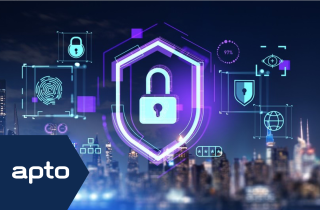
Introduction
When your organisation invests in Splunk Cloud’s Enterprise Security (ES), it’s taking a proactive step towards building a powerful, cloud-based security information and event management (SIEM) system. Unlike traditional on-premise setups requiring manual installations and server management, Splunk Cloud simplifies setup, allowing a quicker path to value. Here, we’ll guide you through the essential steps to configure, maintain, and mature your Splunk SIEM to protect your organisation effectively.
– Leveraging Security Artifacts: Setting the Foundation
Once Splunk Cloud Enterprise Security is installed, you’ll have a set of foundational security artifacts produced during the discovery and design phase. These serve as the backbone of your SIEM, informing all configurations and security strategies, including:
- Mapped Risks and Threat Models: Identifying and prioritising potential threats specific to your organisation.
- Detective Use Cases: Predefined use cases that outline the situations your SIEM should monitor, rooted in your threat model.
- Compliance Framework Mapping: Ensuring alignment with frameworks such as NIST or ISO 27001 by mapping use cases to relevant regulatory requirements.
- Threat Intelligence and Identity Assets: A collection of assets, threat intelligence, and identity profiles that enable Splunk to detect and respond to incidents.
Overall these artifacts are essential for configuring a security approach tailored to your needs, forming the baseline for the SIEM’s operations.
– Data Onboarding and Enrichment: Laying the Data Foundation
Data onboarding is the initial technical step following ES installation, pulling in various data sources identified during the design phase. This process can utilise Splunk’s native tools or third-party data pipelining solutions for efficient data ingestion. Splunk Enterprise Security requires that all data sources comply with the Splunk Common Information Model (CIM) which normalises field names needed for correlation. Key steps include:
- Ingesting Data Sources: Bringing in logs from applications, network appliances, and other critical systems.
- Enrichment with Assets and Identities: Enhancing the quality of incident data by adding context such as user roles, asset ownership, and access permissions. For instance, details about an employee’s status or a device’s manager can be used to enrich alerts, providing analysts with critical context to make faster, more accurate decisions.
In short, this onboarding process prepares Splunk to understand and analyse activity, forming the data backbone of your SIEM.
– Enabling Detective Use Cases: Configuring Initial Alerts
Following the completion of data onboarding, it’s time to activate the detective use cases. These cases, developed during threat modelling, translate into Splunk’s correlation searches, designed to identify and alert on potential security incidents:
- Setting Up Correlation Searches: Splunk’s correlation searches automate detection based on predefined conditions. When these conditions are met, the system generates a notable event that analysts can review.
- Triaging Notable Events: Initially, analysts focus on reviewing and managing these events, establishing a baseline understanding of alerts and common security patterns.
This stage is critical for establishing the first layer of security visibility, marking the beginning of a maturing SIEM solution.
– Implementing Playbooks for Incident Response
At this early stage, your SIEM will likely be handling basic alerts, with limited data coverage. Playbooks enable analysts to respond consistently and efficiently to incidents. Splunk offers products like Mission Control, which allows playbooks to trigger workflows based on the incident type:
- Incident Response Playbooks: Step-by-step guides that outline actions for different types of alerts, from investigation to resolution.
- Streamlined Workflow in Mission Control: Analysts can quickly assess the alert and initiate the correct response steps, ensuring efficiency even in this early phase of SIEM maturity.
These playbooks lay the groundwork for streamlined responses, setting your team up for greater efficiency as the SIEM evolves.
– Maturing the SIEM: Expanding Data Sources and Intelligence
As your SIEM matures, expanding data sources and incorporating threat intelligence will improve detection capabilities:
- Broader Data Coverage: Adding endpoint, cloud, and external application data for a comprehensive view.
- Custom Threat Intelligence Feeds: While Splunk provides basic intelligence feeds, custom feeds curated from trusted sources can reduce noise, ensuring that alerts are relevant and actionable.
These expansions allow Splunk to detect a broader range of potential threats, preparing your SIEM for more sophisticated alerting.
– Adopting Risk-Based Analytics for Smarter Alerting
Traditional alerting methods can lead to alert fatigue, overwhelming analysts with low-priority notifications. By moving to risk-based analytics, Splunk ES prioritises higher-risk behaviours, reducing noise and improving detection quality:
- Risk Scoring Framework: Instead of generating alerts for every detection, activities contribute to a cumulative risk score. For example, repeated low-risk actions by a single user may accumulate into a notable alert if they exceed a certain threshold.
- Contextual Adjustments: Scores can be modified based on user status — such as if the user is a contractor or in a role with access to sensitive data, allowing for contextually intelligent alerts.
Risk-based analytics refine alerting, helping analysts focus on high-priority incidents and enhancing response efficiency.
At Apto, we’re trying to do framework mapping to show what alerts we installed and the coverage you wanted to comply to, therefore providing visibility.
– Introducing SOAR for Automated Response and Efficiency
Automation through Security Orchestration, Automation, and Response (SOAR) further enhances Splunk’s capabilities by automating repetitive tasks:
- Automated Responses: Basic automations, like blocking malicious IPs at the firewall, can be executed without manual intervention.
- Advanced Playbook Automation: Over time, automation can include complex integrations, such as alerting specific stakeholders or automatically isolating impacted devices.
SOAR allows the SIEM to operate with greater efficiency, freeing up analysts to focus on more complex tasks and investigations.
– Continuous Improvement and Compliance Mapping
To maintain an effective SIEM, continuous improvement is essential. Regularly tuning alerts and refining compliance mapping will ensure relevance and alignment:
- Regular Tuning of Alerts: As threat landscapes evolve, it’s crucial to revisit and adjust alert parameters.
- Framework Compliance Mapping: Mapping your SIEM’s functionality to compliance frameworks provides easy tracking for regulatory audits and helps identify areas for improvement.
Continuous improvement solidifies the maturity of the SIEM, helping your security operations stay agile and effective against emerging threats.
Conclusion
Building and maturing a Splunk Cloud SIEM requires a strategic approach, from foundational data onboarding and threat intelligence integration to sophisticated risk-based analytics and SOAR automation. By following these steps, your organisation can evolve its Splunk SIEM into a resilient, intelligent solution, prepared to handle modern cybersecurity challenges while providing actionable, compliant security insights. As your SIEM matures, it can continue to scale with additional Splunk products and solutions, future-proofing your security posture.
See how we can build your digital capability,
call us on +44(0)845 226 3351 or send us an email…



